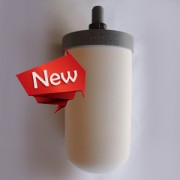Are you aware of the benefits of water filtration
In a world where access to clean drinking water is essential, many individuals are becoming increasingly aware of the benefits of water filtration. Whether it’s tap water, well water, or water from other sources, filtering can significantly improve its quality and safety.
from other sources, filtering can significantly improve its quality and safety.
One popular option for water filtration is the use of under sink or benchtop gravity-fed water filters. These filters, such as the Valley Pottery ceramic benchtop gravity-fed water filter, offer a reliable and efficient solution. By utilizing filter cartridges like the SCP Fluoride Plus, these filters effectively remove contaminants, including fluoride, ensuring that the water you consume is free from impurities.
 The advantages of filtering your drinking water are numerous. Firstly, it improves the taste and odor of the water. By eliminating unwanted chemicals and pollutants, filtered water tastes fresher and cleaner, making it more enjoyable to drink. Secondly, filtration removes harmful substances such as bacteria, viruses, heavy metals, pesticides, and chlorine. This ensures that the water you consume is healthier and reduces the risk of waterborne illnesses.
The advantages of filtering your drinking water are numerous. Firstly, it improves the taste and odor of the water. By eliminating unwanted chemicals and pollutants, filtered water tastes fresher and cleaner, making it more enjoyable to drink. Secondly, filtration removes harmful substances such as bacteria, viruses, heavy metals, pesticides, and chlorine. This ensures that the water you consume is healthier and reduces the risk of waterborne illnesses.
Furthermore, filtering your water provides peace of mind. It allows you to take control of your water quality, ensuring that you and your family are consuming water that meets your standards of safety and purity. Additionally, by reducing the consumption of bottled water, you can contribute to a more sustainable environment by minimizing plastic waste.
Installing an under sink or benchtop gravity-fed water filter, like the Valley Pottery ceramic filter, is a convenient solution. These filters are easy to install, require minimal maintenance, and are cost-effective in the long run compared to buying bottled water.
In conclusion, filtering your drinking water using the Valley Pottery benchtop offers numerous benefits. From improving taste and eliminating contaminants to providing peace of mind and promoting sustainability, filtration ensures that the water you consume is clean, safe, and enjoyable. Make the choice to filter your water and experience the positive impact on your overall well-being.








